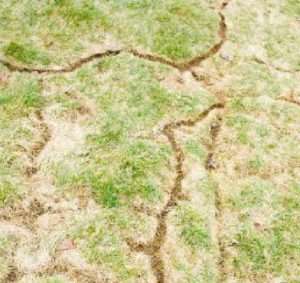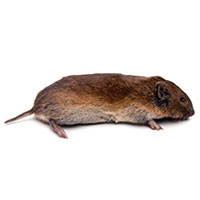Proven Vole Control Methods to Safeguard Your Property
Proven Vole Control Methods to Safeguard Your Property
Blog Article
Grasping Vole Pest Control: Extensive Insights on Infestation Prevention and Therapy Approaches
As building owners and caretakers, the presence of voles can posture a substantial difficulty to maintaining the integrity of our outside spaces. Comprehending the ins and outs of vole behavior is essential in creating effective bug control strategies. By acknowledging the subtle indications of vole infestation beforehand, we can take aggressive actions to stop widespread damages. In this discussion, we will certainly explore the nuances of vole behavior, dig right into the recognition of problem signs, and reveal one of the most efficient prevention and treatment techniques. Keep tuned to find the understandings that will equip you to understand vole insect control and secure your building versus these evasive rodents.
Understanding Vole Behavior
Taking a look at the foraging patterns of voles offers useful understandings right into their behavior and environment preferences. By observing their foraging behavior, researchers can get a far better understanding of where voles choose to develop their environments and the level of their ecological influence.
Study indicates that voles show selective feeding behaviors, choosing origins, seeds, and bulbs. This dietary choice affects their foraging patterns, leading them to locations rich in plants and ground cover. Furthermore, voles are known to develop sophisticated tunnel systems for foraging and nesting objectives, indicating a high level of versatility to their surroundings.
Understanding vole actions is essential for carrying out targeted parasite control actions that interrupt their habitat preferences and foraging tasks (vole lawn damage). By examining their behavior, specialists can create extra effective avoidance and therapy strategies to take care of vole invasions

Identifying Indicators of Vole Infestation
Vole problems can be detected by recognizing certain indicators of their presence in an area. One of the most typical indications of a vole invasion is the presence of surface area paths.
One more crucial indicator of vole infestation is the existence of small burrow openings in the ground. Furthermore, voles are known to leave behind eaten plant stems, roots, and bulbs near their burrow openings, showing their feeding task in the location.
Moreover, vole droppings can additionally indicate their existence. Vole droppings are tiny, brownish, and cylindrical in form, resembling grains of rice. Discovering these droppings along runways or near burrow openings can verify a vole problem. By being watchful for these indicators, homeowner can without delay address vole problems and avoid further damage.
Executing Positive Prevention Measures

Additionally, utilizing natural vole deterrents like castor oil-based repellents or killer urine can act as reliable safety nets. It is additionally a good idea to on a regular basis inspect outside rooms for any kind of indications of vole activity, such as runways or burrow openings, to address potential invasions quickly. vole lawn damage. By taking on these positive prevention approaches, homeowner can dramatically decrease the possibility of vole damage and preserve the health and wellness and appearances of their landscapes
Effective Therapy Approaches
Including targeted trapping approaches and using approved rodenticides are essential parts of effective therapy strategies for handling vole problems. Normal surveillance and maintenance are also crucial facets of successful treatment techniques to make vole control sure that vole populations are maintained under control. By integrating capturing, rodenticides, habitat alteration, and regular tracking, effective vole bug control can be achieved.
Tracking and Maintenance Tips
Maintaining a systematic schedule for tracking and performing regular upkeep tasks is critical to maintain the effectiveness of vole parasite control steps. Normal tracking permits the early discovery of vole activity, enabling punctual treatment before invasions get worse. To efficiently keep an eye on vole populations, purposefully positioned traps can be used in vole runways or near burrow entryways. By regularly inspecting these catches, homeowner can gauge the level of vole activity and readjust control approaches appropriately.
Additionally, preserving a neat and well-kept landscape is crucial in vole avoidance. Clearing away debris, such as stacks of timber or thick plant life, eliminates possible vole habitats. Frequently trimming and trimming grass plant life helps in reducing vole concealing spots and lessens their accessibility to food resources.
Furthermore, recurring maintenance of physical barriers, such as fences or wire mesh, is vital to avoid vole intrusion. Inspecting and repairing any kind of damages to these structures guarantees that vole control stays effective in securing residential or commercial properties from infestations. By including these tracking and maintenance methods into a thorough vole insect control plan, individuals can properly manage vole populations and secure their residential properties from damages.
Final Thought
Finally, grasping vole insect control needs a strong understanding of vole habits, the ability to identify signs of invasion, carrying out aggressive avoidance steps, efficient treatment techniques, and constant monitoring and maintenance. By taking a detailed method to vole control, people can effectively handle and avoid problems, inevitably shielding their building and surrounding environment from damage triggered by these little rodents.
In this discussion, we will explore the subtleties of vole behavior, dive right into the recognition of infestation signs, and discover the most reliable prevention and treatment methods.Including targeted trapping techniques and utilizing authorized rodenticides are necessary parts of efficient therapy techniques for managing vole infestations. To efficiently keep an eye on vole populations, strategically put traps can be made use of in vole runways or near burrow entryways. Inspecting and repairing any kind of damages to these structures makes certain that vole control continues to be reliable in guarding residential properties from problems. By incorporating these tracking and maintenance techniques into a detailed vole parasite control strategy, individuals can effectively handle vole populaces and protect their homes from damage.
Report this page